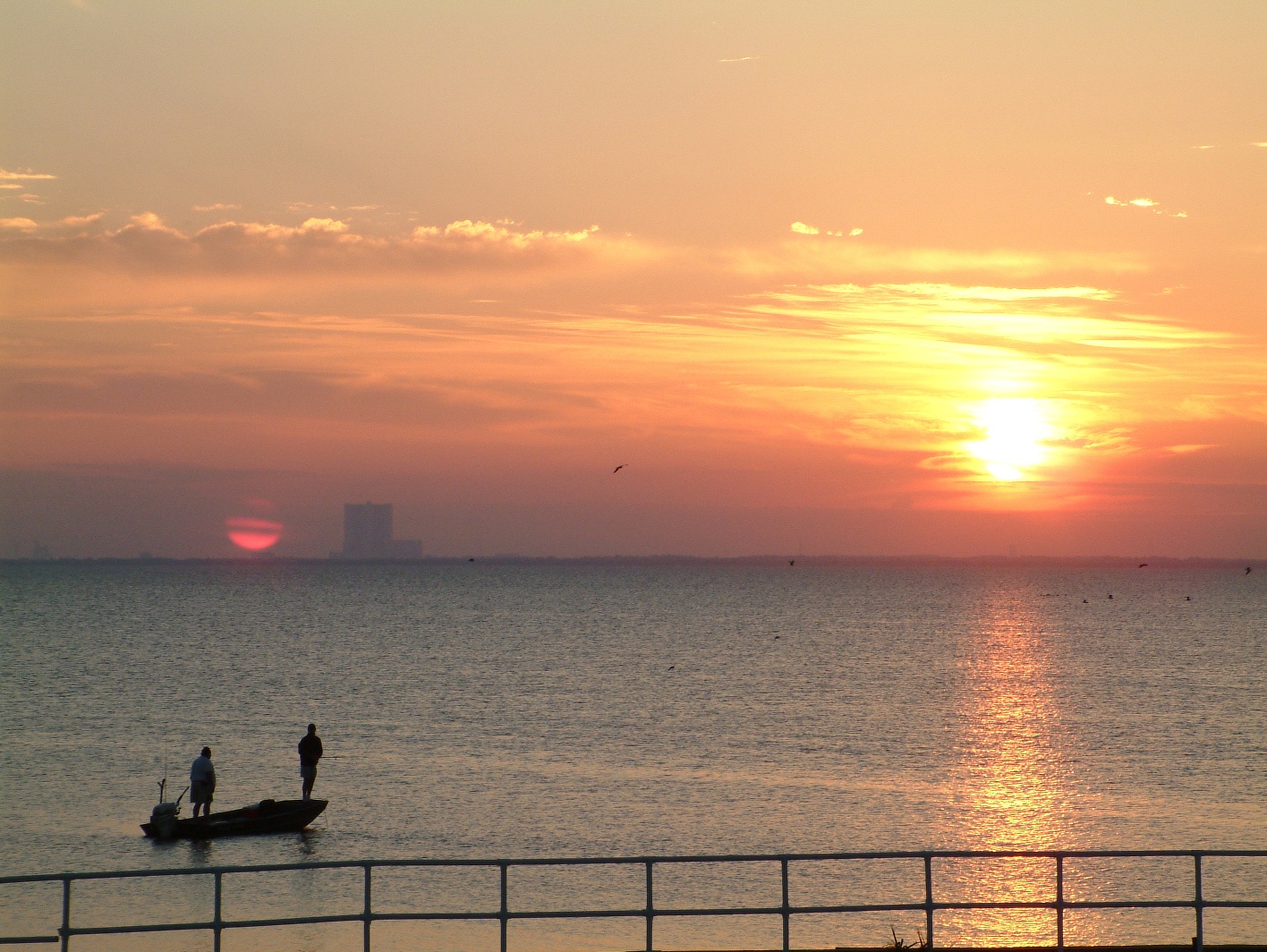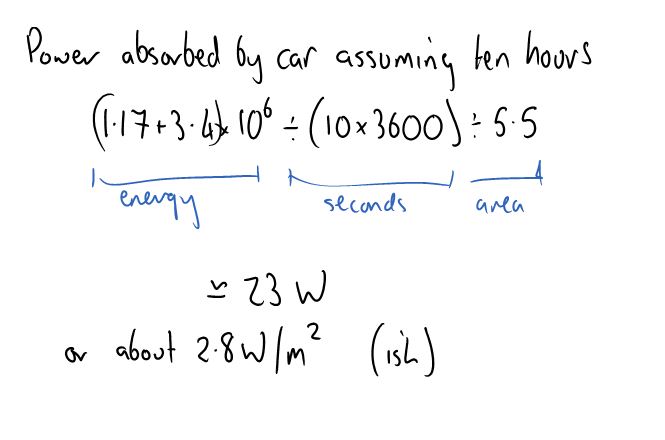The weather this morning was cold, calm and crisp. This meant that there were plenty of contrails over the South East of the UK.
Water Ice
Chimney Balloon
I’ve lived in my house for nearly ten years. It’s an old house (built 1880) and a Victorian terrace. The back of the house overlooks fields and woods all the way to the paper mill at Aylesford. There’s always steam (or smoke – less pleasant but it’s probably steam because a lot of water is used in paper stuff) of some kind spewing from the mill.
Mostly the wind comes from the south to west in the South East of Great Britain. This means it travels freely over the open area at the back of my house and then strikes my house nearly front on.
In the map the long thin blue bit is a river (tidal section of the river) and the big blue bits are quarry lakes.
The wind hits the back of the house. This causes high local pressure while over the house the wind continues moving creating a low local pressure (Bernoulli Principle). Most of the gaps in my house are at the back of the building. This means that the wind flows through these gaps and exits through the largest hole in the house which is the chimney, which has a lower pressure at the top!
This situation caused draughts and noise even when there was a slight wind.
One day I got “Google happy” and just searched for a chimney balloon. I don’t know what prompted me to search for this, I may have searched for “chimney draughts” first and then found the chimney balloon. Who know? Google and Chrome but I’m not going to spend my time looking through my history.
I ordered a chimney balloon from Amazon. It’s a plastic bag that I inflated in the chimney pipe. It blocks the chimney. It stops the draughts. Simple. I’m impressed with what a simple solution it is.
The one draw back is that it has also made the dining room really quiet. I can no longer hear the outside world. This is very strange but something I’ll get used to. There were some serious winds recently and I only knew about them when I went into the bathroom (it is at the back of the house), the dining room was that quiet. Also, my feet no longer get really cold when I sit in the dining room as there is no draught (or rather minimal draught now).
DC Day Five
On this sunny day spent in the capital city of the United States Of America I had an appointment with a Segway tour company. I had to walk to Foggy Bottom. I could have ridden in a cab or bus but the weather was nice although blowy and walking means you see so much more. It’s also free! I arrived about an hour early and so I went to a coffee shop, ordered a ciabatta sandwich which came with crisps and drank a caramel macchiato coffee. The coffee was lovely and might become my standard although I am reminded of a former colleague’s t-shirt that said “Latte means you’ve paid too much for your coffee”.
I proceeded to the Segway Tour offices and signed all the relevant disclaimers and bought some water to take on my tour. We had some instruction from Rory, the female tour guide, and although I was quite happy once on the Segway I wasn’t very good at getting on and off. I needed a little extra help to do that, although I didn’t care. Better that than falling on my arse! Once everyone was ready we visited the following buildings and monuments:
- Vice-President’s Ceremonial Office Building
- First Division Monument
- White House – South Lawn
- The Washington Monument
- Thomas Jefferson Memorial
- FDR Memorial (saw Marine One fly over while here!)
- Lincoln Memorial
- Korean War Memorial
- Vietnam War Memorial
All of these were stunning and beautiful buildings or monuments. It was well worth the money to experience the Segway and see these sights. Really good value.
After the tour I needed some food and also wanted to see the White House a little closer so I walked to 1600 Pennsylvania Avenue and took some pictures of the front of the White House or the North Face. It’s quite small in comparison to the other buildings in the area but much bigger than Number 10 Downing St. Although really the comparison should be made with the official residence of our Head of State which is Buckingham Palace. I could see the West Wing and plenty of people milling in and out of security. I didn’t think it worth the risk to blag my way in. There was a sniper on the roof!
I bought a hotdog from a street vendor and headed to the National Museum of Natural History. It was, again, a lovely building but I think I may have been spoilt in the UK with our museums. I didn’t think the museum anything special although I guess it is probably the best of its kind in the USA. Science and natural history are definitely the way to go people. The museum was ok. Lots of families there again as it was spring break.
I wandered back home and met Kate at around 4. Sorted out my photo uploads and then waited for Mr O to return so we could get to the baseball game.
I had bought some tickets for the baseball as we were hoping to meet some friends there, as it happened we didn’t managed to speak to each other but it was really well worth going to the Nats ballpark. We arrived just as the game was starting after trying to find a left turn way into the parking and having whistles blown at us and lots of waving hands but no instructions about an alternative route. I found that just a little rude! It turns out that baseball is a lot like cricket. Not a lot happens in quite a long time. The Americans just sit and eat and drink and occasionally cheer. Pretty similar to cricket. It’s a game full of statistics (like cricket) and involves trying to hit a ball thrown at around 90 mph. We should import cricket and regain our colonial rule! I saw someone reach 1st, 2nd and 3rd base. Also saw a home run by a Nats pitcher, Gio Gonzalez. The Nats won the game against the Miami Marlins by 3 to 0. We drove home and just went to bed. It had been quite a busy day.
[photonav url=’http://fooyah.net/wordpress/wp-content/uploads/2013/04/2013-04-03T21-50-38_1resized.jpg’ mode=’move’ popup=’none’ animate=” container_width=” container_height=’400′]
Cold Morning
Jack Frost
This Fooyah Communication concerns the weather and cars. It does not concern the fact that my car doesn’t like starting if the temperature is below 2 Celsius and nor does it concern the run of cold weather recently. I also have not done any controlled, scientific tests to confirm my observations but I would be interested in doing so.
Observation:
When there is a frost and the cars in my street have ice on the windows the side of the car that is closest to the buildings has less or zero ice.
Hypothesis:
One side of the car is warmer than the other resulting in less ice.
Mechanism:
The nearby buildings radiate heat and keep that side of the car warmer or slow its loss of heat.
Pretty picture:

Cars parked in the road in position A have less ice on the SW facing side which is nearest the buildings in the street. Cars parked in position B have less ice on the NW side which is closest to the buildings there. It is not a phenomenon to do with the sun as both of these positions are shaded from the sun’s rays in the early morning and there isn’t any sun when I go out to the car in the deep dark midwinter.
Most of the houses in these streets were built around 1880 and so have brick-thick walls and no cavities to insulate. Therefore they radiate the heat energy of the house quite efficiently. I need to park my car outside a modern house with cavity insulation to see what effect that has on the frost of the car.
Some not-very-sciency-maths-stuff:
I have made a huge number of simplifcations in the following calculations but the order of the result will be about correct and if it isn’t then I am sure that one of the F5 +1 will let me know. Essentially I have estimated the amount of energy lost by the air in my whole house and have assumed that about one third goes through the front of the building (the roof is quite well insulated). I have also assumed that the bricks of the house will lose some heat over the night and that this is radiated out although some will be radiated in. Then the car absorbs the energy without any loss. Basically, the final answer is a big ISH.
So the car absorbs about a couple of Watts per metre squared. That seems about right, but what do I know? Thermodynamics freaked me out at college!
How to light a fire
Photos to be included soon.
When I was a lad we didn’t have any fancy central heating and radiators, oh no. Coal fire in the front room and a Rayburn (think cheap Aga) in the dining room. The Rayburn was always on and in winter we would move the tv into the dining room so there was only one room to heat. As soon as you got out of bed or the bath you’d run to the dining room as quick as you could.
The only winter day in the lounge was Christmas day. We’d move the tv back for the day and the tree and presents would be in there. It was my job to start the coal fire in the lounge. It was nice to have the responsibility.
I’m worried that starting a fire is a dying skill. Mind you it’s just not really needed anymore. Central heating and all that! Unlike, say, changing a wheel, surely all people can and have done this for practice but people I’ve spoken to have no idea about this. I will be doing this for fun with my sons when they are older.
So the easiest way to get a fire going requires a little time to set up but you save time in the long run having to start again.
Take some news paper, lay it flat and then gather up along the fold line so it’s bow shaped and then fold in half and put these pieces under the grate (these are the bits you light).
Now take more newspaper and lay it flat. Then roll into a pipe about 2cm in diameter along a diagonal of the rectangle. Now take your tube and tie it in a loose knot and even out the circle. Place these on top of the grate to cover the surface. These will light the kindling.
The kindling should be places in a check pattern on top of the paper circles. A couple of layers should be enough.
Lastly get some coal, without too much dust, and place a layer evenly on the kindling. The kindling should be placed so no lumps of coal can fall onto the paper circles. That’s it!
Get a match and light the paper under the grate in a few places and your fire will start beautifully.
Independence Day
Another dog walk another thing of interest. Nice weather front formation. Dark clouds preceded by clear bright skies turning to overcast.










